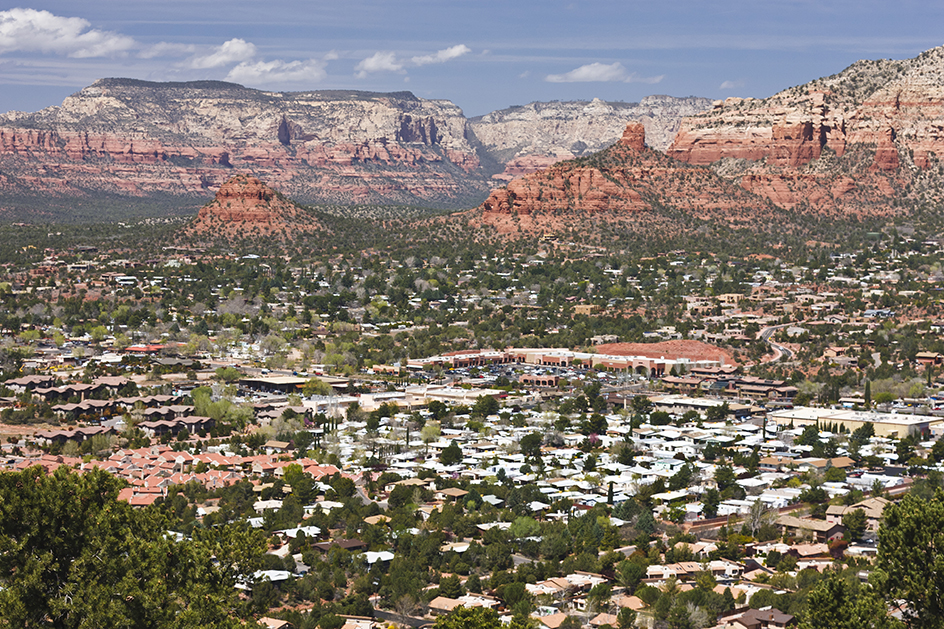Sedona (pop. 10,192) is a city in a scenic area of northern Arizona . It lies at the southern edge of the Colorado Plateau region, at the south end of Oak Creek Canyon. The canyon’s stunning red sandstone formations help attract millions of visitors to the area each year. Sedona straddles both the Coconino and Yavapai county lines. Just over half of Sedona’s land is privately owned. The remainder is part of Coconino National Forest. Sedona was incorporated as a city in 1988 and has a council-manager government.

Yavapai, Apache , and other Indian groups lived in the Sedona area before white settlers arrived in the late 1800’s. Early residents established ranches and orchards there. One early resident was Theodore Carlton “T. C.” Schnebly, who had moved to the area from Missouri. He set up a hotel and post office in his home, and he submitted a number of potential names for the postal stop to postal officials. In 1902, the officials accepted the shortest submitted name––that of Schnebly’s wife, Sedona.
The Sedona area’s spectacular scenery soon became famous. Beginning in the 1920’s, the area became the backdrop for a number of motion-picture Westerns. Many tourists and retirees came to the area. Nearby attractions include Red Rock State Park, Slide Rock State Park, and numerous galleries, trails, and spas. Sedona is also famous as the site of several “vortices”—that is, places that some people claim have spiritual powers. Vortices of the Sedona area include Airport Mesa, Bell Rock, Boynton Canyon, and Cathedral Rock.
